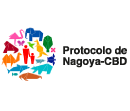 Overview
Overview


Area km2: 2,780,400
Population: 44,938,712
Capital: Buenos Aires City
ISO 3166: AR

Population density:
16.2 hab/km2

National flower:
Cockspur coral tree
(Erythrina crista-galli)
Argentina is a country markedly oriented to the export of agro-industrial products. Argentina’s main crops are soybean, maize, wheat, sunflower and barley, although there is also a strong regional production of lemon, peanut, pulses, cotton, rice, yerba mate, tea, pear and other fruits, and potato and other vegetables, among others. Regarding animal production, Argentina is a major beef producer - a product that has earned the country worldwide recognition - and also produces pork, poultry and sheep meat. Argentina shows significant development of other industries such as milk and dairy products, fisheries and forestry; and the country has earned worldwide recognition for its viticulture. The main agricultural products exported by Argentina are oilseed crops (soybean, sunflower and their byproducts), grain cereals (maize, wheat, rice, barley) and beef.










 Trade
Trade Are there local developments?
Are there local developments?










